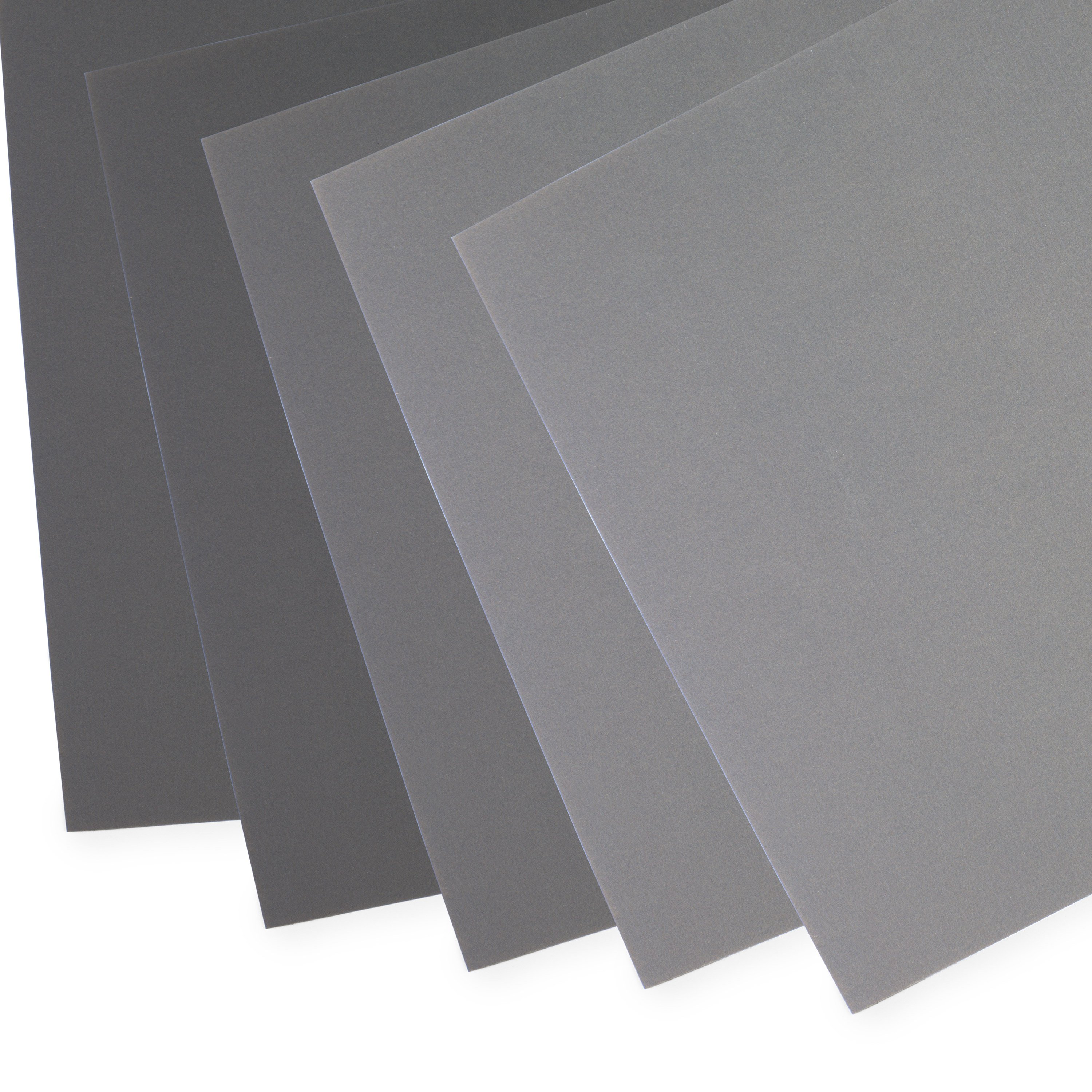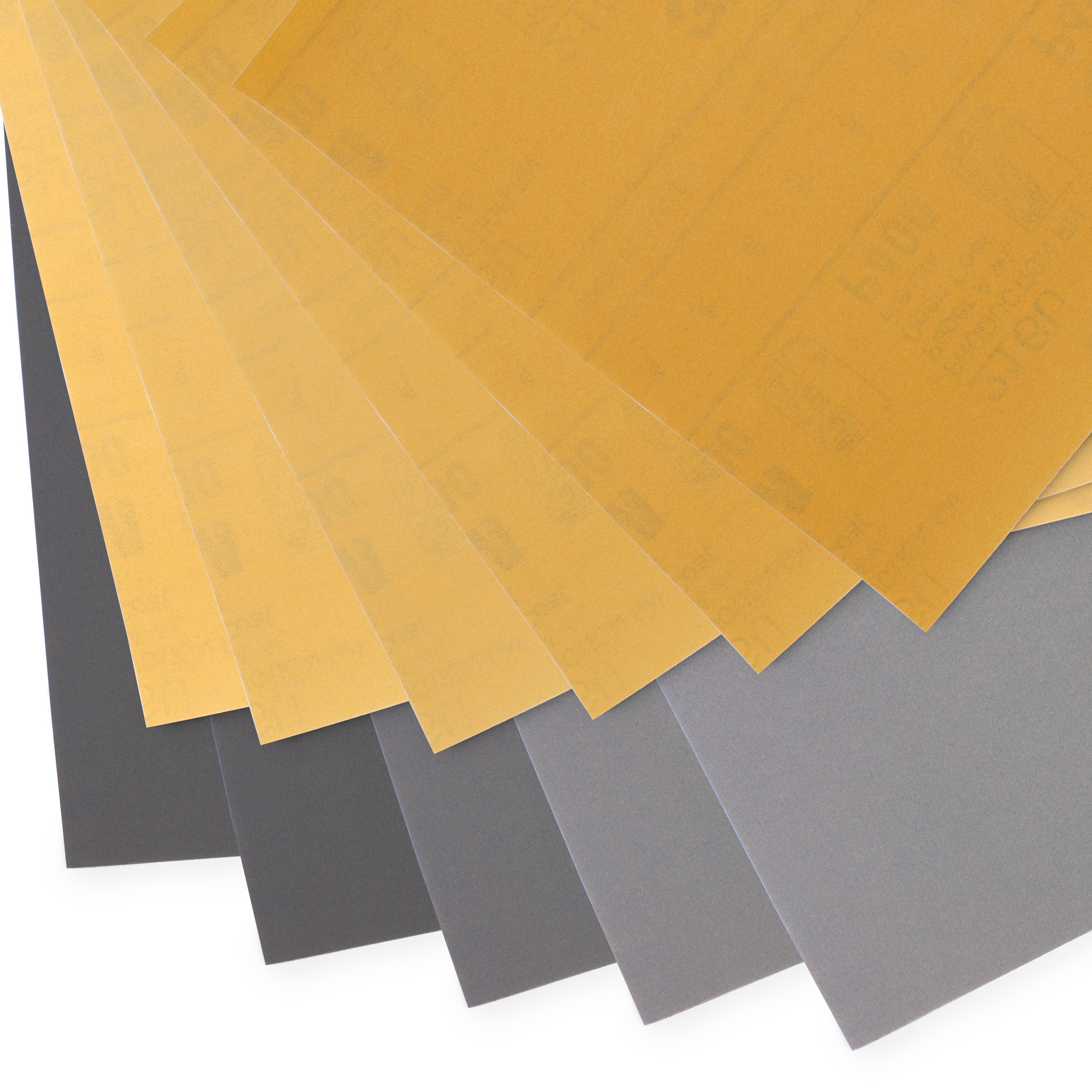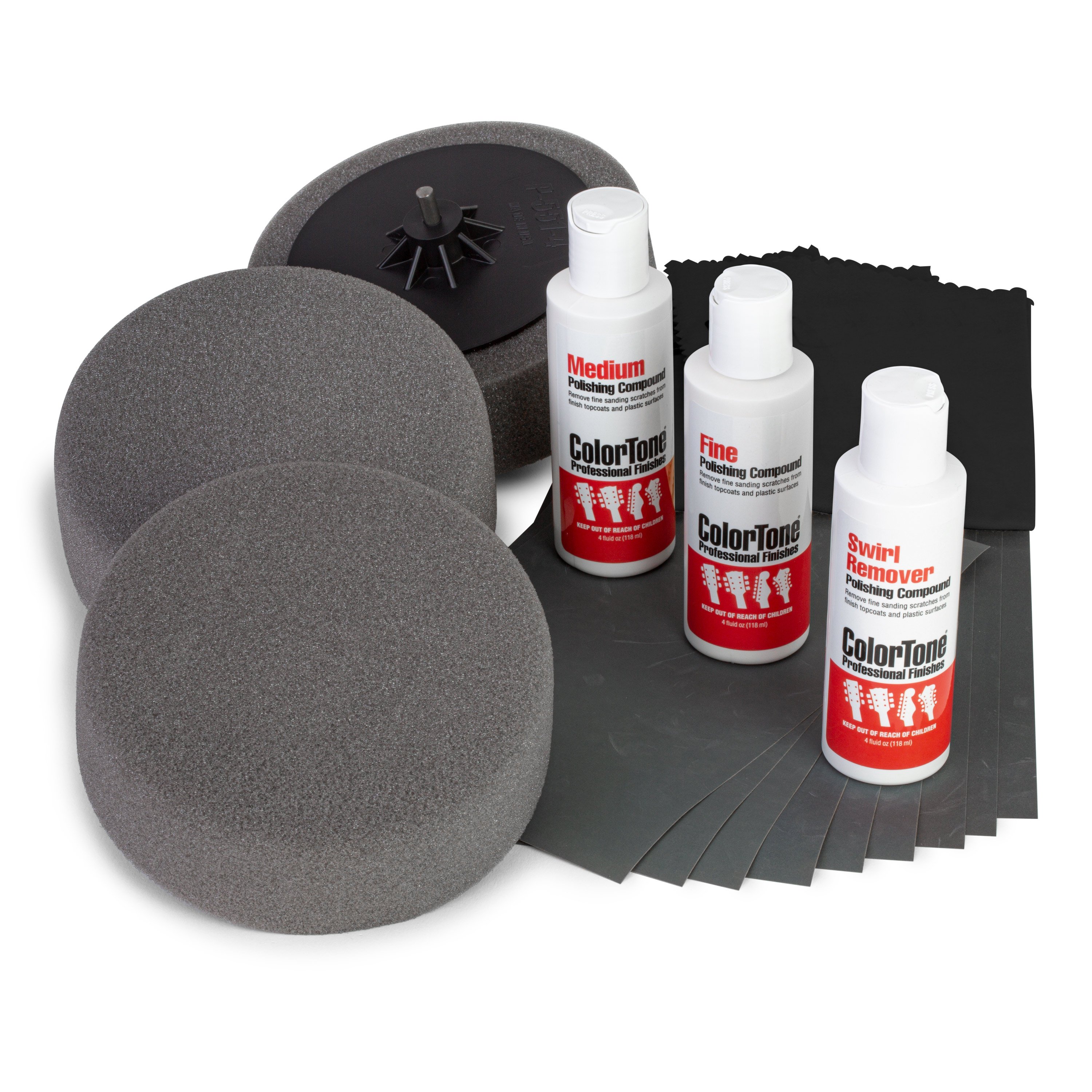Micro Finishing Papers
Micro finishing papers cut more quickly and smoothly than other finishing papers, leaving no scratches when used properly.
Micro finishing papers are made with evenly distributed grit particles of uniform size and shape. Micro papers cut more quickly and smoothly than other finishing papers, leaving no scratches when used properly. They last longer and do a much better job than ordinary finishing papers. As with all "wet-or-dry" papers, soak Micro finishing paper in water with a little Murphy's Oil Soap overnight before using; it will cut better, with less "loading up." Other options for wet-sanding lubricants are naphtha, oil and mineral spirits. Micro finishing papers can be left in water for about five days before needing replacement. Most professionals prefer mineral spirits or naphtha for wet-sanding lacquer finishes, and use water for synthetic polyurethanes and esters. Water can be used with caution when wet-sanding lacquer, but be very careful near exposed unfinished wood surfaces such as F-holes, volume and tone control holes, screw holes, neck pockets and routed pickup cavities. If water penetrates bare wood, splitting and lifting of adjacent lacquer can result; nor should exposed wood be soaked with mineral spirits or naphtha, although these lubricants are more forgiving. Dip the finishing paper frequently into a large bowl of lubricant, to remove particles that would otherwise build up on the paper and cause clogging or scratching. Use a piece of paper about two to four inches square. Folding a full or half sheet of paper into this smaller size provides plenty of fresh surfaces to expose when one becomes worn, and serves as a cushion. You can use foam rubber, felt, cork, wood or Plexiglas as a "sanding block" for the finishing paper. A complete guitar can be sanded with one or two four-inch pieces of paper, or you can switch paper more often. Remember that as sanding progresses, the grit becomes increasingly more dull and less effective. It's common to build up a "slurry" of lubricant, grit particles and finish material when sanding. Every minute or so, remove this with a clean cloth. Wet sand cured finishes starting with as fine a grit as possible. If sanded to 600-800 grit, start with ColorTone Coarse polishing compound. If wet sanded to 1200-1500 grit, start with ColorTone Medium compound. In both cases, proceed through all buffing stages and finish with ColorTone Swirl Remover. Use 1500 and 2000-grits for ultra-delicate sanding. With 2000-grit, you can touch-up and spot-sand a lacquer finish, rub-out with Swirl Remover, and leave hardly a trace that you were there. Of course, practice your technique on "scrap finishes" first. 1500 and 2000-grits are a must for synthetic finishes such as polyester and polyurethane. Even basic 600, 1000 and 1200-grit papers are a bit too coarse for a perfect rub-out on synthetics. (Ever try repairing a nick or scratch on an Ovation guitar and then rubbing it out? With 2000-grit, you'll be able to do it!)



